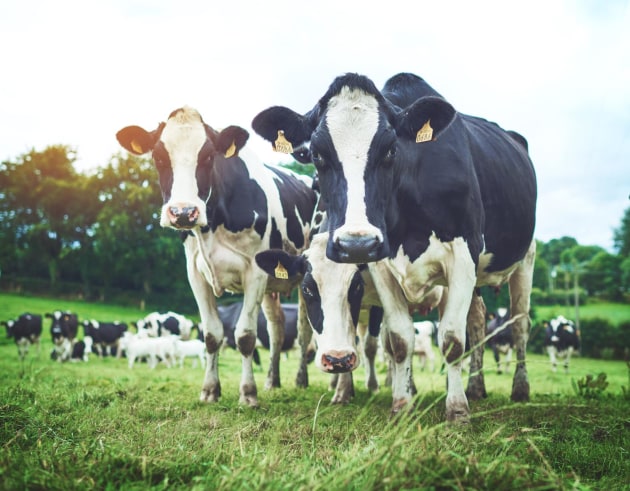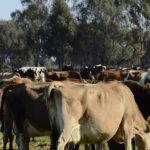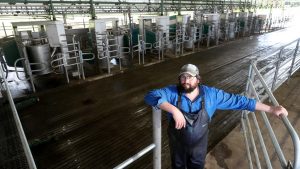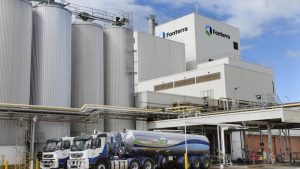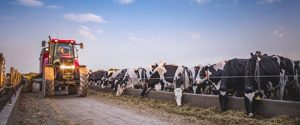
The Australian dairy industry finished 2020 in a reasonably strong position despite the challenges confronted. The year started with some dairying regions battling bushfires. The supply chain then needed to navigate a global pandemic. In the wash-up, the industry weathered the storms well and has a strong foundation heading into a new year.
The industry is on track to see consecutive seasons of dairy farm profitability. Seasonal conditions in 2020/21 have been favourable for most Australian dairy farmers, with the outlook remaining positive with a La Niña underway in the tropical Pacific. The Bureau of Meteorology forecasts January to March 2021 rainfall to likely be above average across most of Australia.
Purchased feed prices are lower than a year ago, and with a sizeable winter crop harvest underway, it is likely to support cheaper feed bills through the rest of the season.
Australia’s long-awaited grain production recovery is here. After three successive years of below-average production – nearly 30 per cent below in the case of 2019/20 – Rabobank estimates Australia is on track to produce 47.4 million tonnes of winter grains, oilseeds, and pulses this year. This means local grain prices will be down notably year-on-year, but with supportive global pricing and some local withholding we expect wheat prices to remain near to five-year averages in 2020/21.
Importantly, farmgate milk prices are supportive of farmer margin. Across the southern export regions, farmgate milk prices were at record levels in 2019/20. While current milk prices in the 2020/21 season are lower, they are still elevated and above break-even for most farmers.
At the end of 2019/20, Australian milk production was less than nine billion litres. The industry had lost around one billion litres of supply (10 per cent) through the previous four seasons due to the impact of drought and market disruptions. A recovery is underway but there are some limiting factors for a quick recovery to Australian milk production, such as the national herd. Cull cow prices remain elevated. The rate of culling has slowed in recent months, but is coming off an extended period of increased cull rates through the drought period.
Improving confidence
All these factors are feeding through into improved confidence. Rabobank’s December Rural Confidence Survey showed a strong lift in confidence levels among Australian dairy farmers and in investment intentions. The signs of a stabilisation, then recovery, in milk production is evident. In the first four months of the 2020/21 season, milk production has expanded by 1.6 per cent.
There has been growth in all key dairy production regions on the east so far. The season has passed its peak (October) and Rabobank has trimmed the full-year growth forecast slightly, but is still expecting milk production growth by two per cent for the full-year, reaching 8.95 billion litres.
The latest data showed some important shifts in the use of milksolids. In 2019/20 Australian manufacturing favoured cheese production, which lifted by 2.3 per cent to 371,000 tonnes. In contrast, output of milk powders dropped, with skim milk powder (SMP) falling 20 per cent to 141,000 tonnes and whole milk powder (WMP) dropping eight per cent to 43,800 tonnes. Close attention remains on the production shifts in the new season given the increase in milksolids, and weakness in end-user demand for cheese and butter due to market shifts during the global pandemic. The export data provides some context. In the first quarter of the new season, total Australian dairy exports are up 12 per cent on a volume basis. In the same period, SMP exports are 50 per cent higher year-on-year and liquid milk exports are also up 12 per cent.
Light at the end of the tunnel?
As a challenging 2020 ends, more optimistic projections set the tone for 2021. Rabobank expects the global economy to contract by 3.8 per cent in 2020 and recover by 4.5 per cent in 2021. China is the only major economy expected to grow in 2020. There is positive news on the arrival of effective COVID-19 vaccines, although availability and distribution will vary globally.
Several factors in 2021 aid positive consumer sentiment in key dairy markets, including effective vaccines, less political uncertainty after the US election, a weaker US dollar that aids commodity prices, and projections for economic growth in most regions after the 2020 recession.
Supply growth is slowing across primary export regions. Milk production gains across the global Big-7 dairy exporters surprised in 2020, with growth at its highest level since 2017 (4.5 billion litres). However, Rabobank is projecting a more moderate growth rate in 2021, albeit positive across all regions, totalling 2.7 billion litres.
The duration of the second COVID-19 wave and the arrival of vaccines are key to stabilising Q1 2021 demand in foodservice. While there is optimism regarding vaccines and gradual control of the pandemic, there are increasing restrictions on foodservice outlets as COVID-19 cases are on the rise overseas. Retail sales should strengthen further as more meals are consumed at home. Nevertheless, a full recovery in dairy demand is contingent on reaching pre-COVID-19 sales.
Risks lingering
The impact of less government interventions could be significant in 2021. A key reason for strong demand and healthy trade during the COVID-19 pandemic has been government actions in many countries during 2020. It is likely that fiscal constraints will prompt governments to scale back dairy purchases and cash payments to consumers in 2021. This could limit demand growth and impact global prices in 2021 if the economic recovery does not materialise.
Industry consolidation
Locally in Australia, 2020 saw another major shift in consolidation of the processing sector following details of Bega Cheese acquiring the Lion Dairy and Drinks business, making Bega Cheese a much bigger player in Australian dairy. The acquisition will see Bega Cheese lifts its annual milk intake by 75 per cent to 1.7 billion litres, meaning it will rival that of Saputo Dairy Australia and Fonterra Australia.
